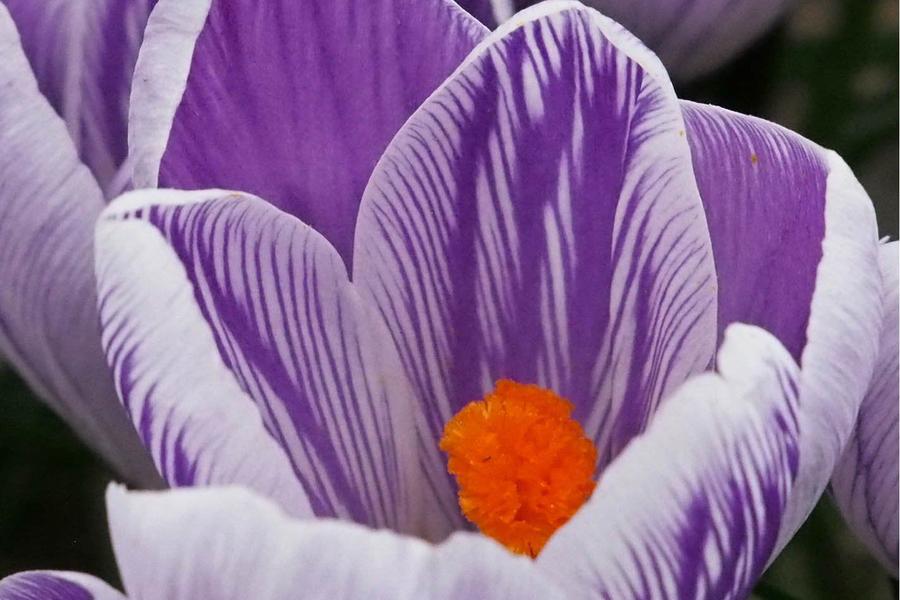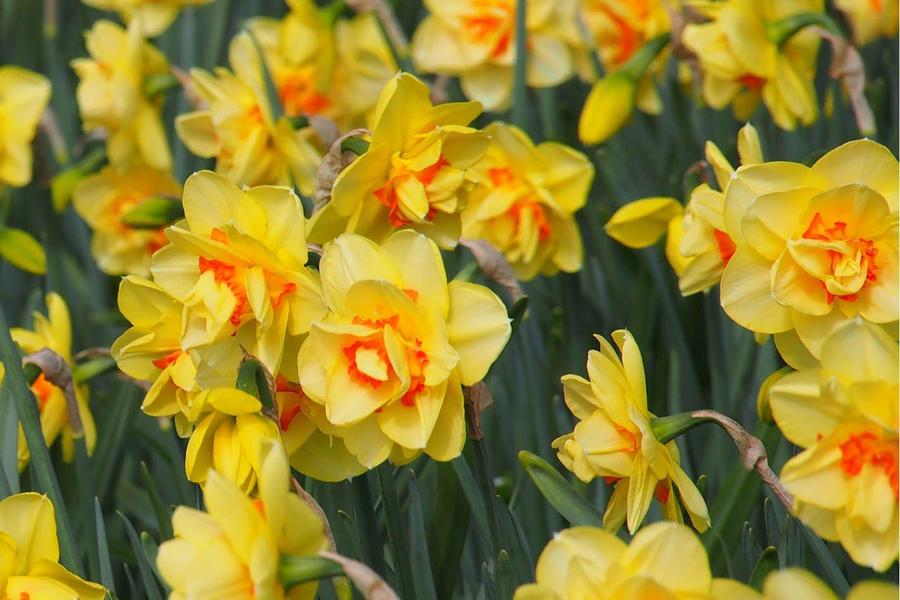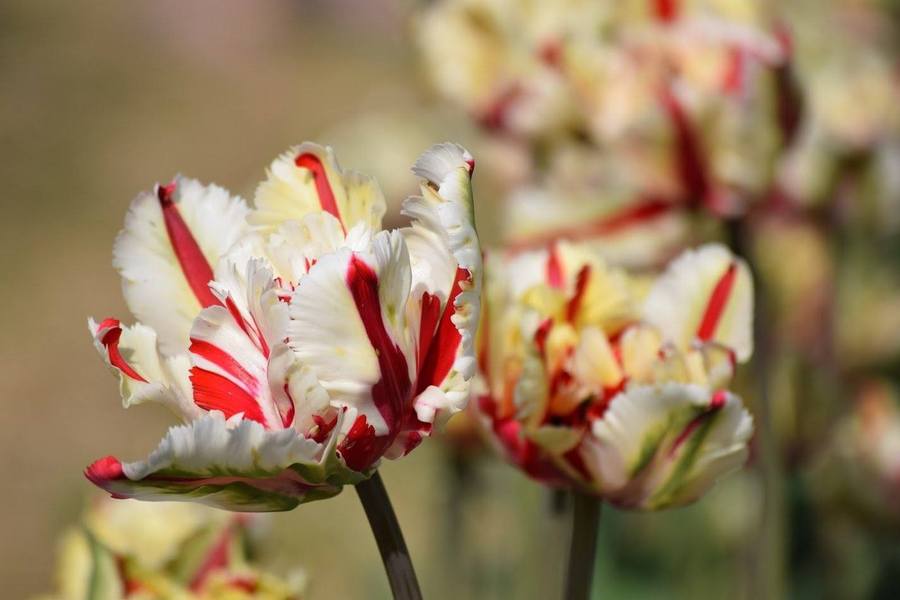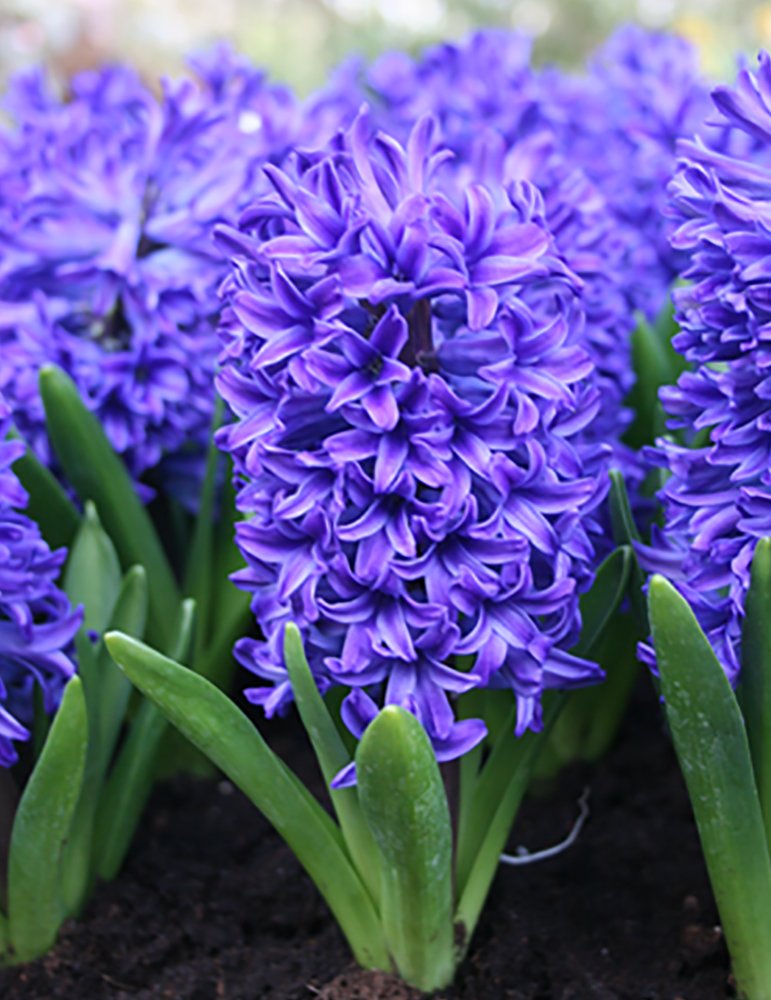Fall planting of certain flower bulbs will put you on track for a riot of color next spring.
Ever wonder how some of your neighbors have such amazing gardens as soon as the winter chill fades? Chances are, they started by laying down the right bulbs the previous fall. Both careful planning and creative disorganization can achieve a beautiful spring garden if you do the right research and scatter some bulbs. Don't despair if you don't have a designated garden spot; most of these flowers do well just poked into the ground for casual pops of color.
Crocuses
These tiny flowers are your first burst of color each spring, often popping up through melting snow. They don't have to be dug in deep; about 4 inches will do for these small bulbs. Just use a thick stick to make your planting hole and backfill with garden soil. Make sure to plant some near your front door or driveway so you see them make their early appearance.

Courtesy of Wicked Tulips Flower Farm
Daffodils
Naturalizing daffodil varieties have the additional benefit of multiplying in drifts year after year. If you want a no-muss-no-fuss patch of daffodils, you'll want to order the following variety bulbs: Rijenveld's Early Sensation, Barrett Browning, Tete a Tete, Mount Hood, Ice Follies, Professor Einstein, Thalia, Actaea, and Cheerfulness. In addition to the standard single daffodils, double daffs are an explosion of petals (try Golden Ducat or Peach Cobbler).

Courtesy of Wicked Tulips Flower Farm
Tulips
It's not your imagination. Those tulips you planted a few years ago are gone, despite doing so well last year. Tulips rebloom at different rates, varying by type and soil conditions. Newer hybrids are less likely to rebloom consistently, so stick to classic, old-fashioned varieties. Ruffled parrot tulips and double tulips can be scattered among your standard tulips for an interesting textural contrast.

Courtesy of Wicked Tulips Flower Farm
Hyacinths
These elegant flowers are the most fragrant on the list. Often described as smelling like an old lady's perfume, they may be a bit overwhelming for most if brought indoors. Though most commonly seen in blue or purple, hyacinths come in a myriad of colors. They grow relatively low to the ground, so put them in front of taller flowers if you are using them for a border.

Courtesy of Holland Bulb Farm
Where can I find these flower bulbs?
All around the DMV, grocery stores, hardware stores, and garden centers have flower bulb displays out right now. If you want to find specific varieties, try the following well-established online companies: Breck's, Michigan Bulb, American Meadows, Wicked Tulips Flower Farm, and Burpee.
How do I plant these flower bulbs?
Every type of bulb will have different planting instructions. Be sure to check the packaging for exact planting depths and sun/shade requirements. Spring flowers fall into three categories: early, mid-season, and late. Plant a variety of each to ensure beautiful flowers throughout the entire spring. When determining placement, keep in mind that you can layer your bulbs in a single area. This saves time and space for those with smaller gardens. No outdoor planting space? Hang on to those bulbs and force them in pots or vases for a colorful living display.
Do you plant spring flowers every fall? What varieties work best in your garden? Let us know in the comments below!
